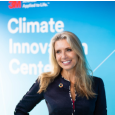Can you share some insights on Brambles' recent successes and what drives them?
Brambles has recently received significant recognition for our technological advancements, business model, and sustainability initiatives. Our success is fundamentally rooted in our circular business model. We are proud to demonstrate that the circular economy is not merely a theoretical concept but a viable and effective reality. We operate in the logistics and supply industry, where instead of selling products to facilitate the movement of goods, we offer services instead. Our customers, primarily in the fast-moving consumer goods sector, rent our platforms - pallets, crates, and containers – which then circulate through the supply chain and are collected by us for repair and reuse, exemplifying the principles of the circular economy.
This model is both simple and complex. While it may appear straightforward, it involves intricate logistics to ensure that our assets are reused by different manufacturers, even competitors, in a continuous loop. This approach incorporates the shared economy and emphasizes reuse, which is a step beyond recycling. We are committed to making our already sustainable business model even more sustainable through ambitious targets, such as having all timber certified and reducing our carbon emissions in alignment with science-based targets.
How does Brambles achieve and maintain leadership in sustainability?
Our leadership in sustainability is not just about our circular business model but also recognizes that we have built a comprehensive sustainability program with ambitious goals. Our role in our customers' supply chains also means we can make a far-ranging positive impact beyond our own business. Each time a customer uses our pallets, they avoid linear solutions and benefit from the environmental advantages of pooling. Our targets aim to make our business model even more circular and beneficial to our customers' environmental footprints.
We've set ambitious objectives across those facets that are the most material to our business, such as achieving 100% certified timber (which we reached in 2021 and have maintained since), reducing carbon emissions, minimizing waste, and promoting customer collaborations. We’re also focus on social impact through initiatives like supporting food banks, which positively affected over 17 million people last year. Consistently delivering on these commitments is how we’ve built and solidified our leadership position. Moreover, our sustainability efforts also contribute to strengthening our business by attracting talent, providing value to customers, and offering an appealing proposition to investors.
Can you discuss the importance of collaboration in Brambles’ sustainability efforts?
Collaboration is essential to our sustainability program. We have established a comprehensive customer value proposition based on collaboration at three levels which corresponds to their level of maturity. First, we can demonstrate that we’re a reliable partnership with solid credentials, ensuring we bring no risk to our customers' supply chains. Second, we can support our customers to achieve their own sustainability goals by quantifying the positive impact of using our reusable packaging solutions compared to linear alternatives.
The third level involves innovative collaboration to further enhance supply chain sustainability. We currently engage with over 400 customers in initiatives such as transport collaboration to eliminate empty miles and optimize logistics. This collaboration also addresses a growing area of single-use plastics, a significant and growing area concern for our customers. Together, we’re looking at ways to both find long-life reusable alternatives while also taking more of the post-consumer plastic to use in our new plastic assets, aligning with our regenerative vision. By working closely with customers, we create additional value and strengthen both our sustainability program and business operations.
How does digital transformation play a role in Brambles' sustainability strategy?
Digital transformation is a strategic priority at Brambles and plays a significant role in our sustainability strategy. By digitizing our pool of pallets, we illuminate the supply chain and gain valuable insights into the movement of our assets and the products they carry. This increased visibility allows us to recover more assets, enhancing our circular business model's efficiency by keeping materials in use for longer and minimizing our demand for natural resources.
For instance, digitalization helps us reduce asset loss and improve asset recovery, directly impacting our sustainability credentials and our customers' positive environmental impact. Additionally, analyzing data from our supply chain enables us to optimize transportation and collaborate with customers to minimize carbon emissions. We can match transportation flows with customers' needs, reducing empty miles and improving overall logistics efficiency.
Can you elaborate on Brambles' regenerative vision and its implementation?
Our regenerative vision sets us apart in the sustainability space. In 2020, we achieved zero deforestation for our timber supply when we ensured that all timber used in our operations came from sustainable sources. Building on this achievement, we aimed to create a net positive impact through our regenerative vision. This means not just reducing negative impacts but actively reversing environmental harm and putting in more than we take from the planet.
Our goal is to flip the traditional linear model that consumes resources and produces waste to enable a supply chain that consumes existing waste and generates natural resources. This vision is more than just an inspiring idea; it involves concrete actions, such as producing new plastic platforms from recycled materials within our supply chain. Implementing this vision requires collaboration, innovation, and a commitment to delivering tangible results.
How does Brambles promote the circular economy beyond its operations?
We know that maximising the benefits of a circular economy requires scale so see a moral obligation to be strong advocates beyond our own operations.
Globally, we actively share our knowledge and practices with industry associations, customers, transporters, and investors to encourage broader adoption, based on the level of maturity in the market. For example, in Latin America, we collaborate with universities and local governments to educate and promote the concept and adoption of the circular economy through media, events, webinars, websites and white papers. It’s a natural complement ti our Positive Bonds initiative, which was designed to help us to bolster customer relationships through a joint sustainability agenda. It has been a powerful success, with dozens of customers across Argentina, Brazil, Chine, Colombia and Mexico now collaborating with us to pursue shared sustainability goals.
Legislation also plays a crucial role in advancing the circular economy. We engage with governments worldwide to advocate for policy settings that promote and protect circular business models, and do this by helping policymakers better understand around how circular models operate and what they need to succeed. In Europe, we have been closely involved with the European Parliament and the European Commission in offering our experience in reusable systems for the Green Deal and the circular economy directive.
What challenges does Brambles face in its sustainability journey, and how are they addressed?
Despite our successes, there are still challenges in our sustainability journey that will require a sustained and concerted push from across our business and with customers and partners. For instance, achieving zero waste to landfill in some locations requires finding market solutions for the waste we produce. Pursuing customer collaborations to support their sustainability efforts is an ongoing effort to ensure your goals are always in alignment. Decarbonizing transportation remains a significant challenge, as low-emissions, heavy-duty truck technologies are still emerging in the market.
But we recognize and address these challenges through continuous improvement and innovation. In developing our sustainability program, we were very deliberate about settin ambitious targets in order to deliver the greatest impactful.
How does Brambles measure and ensure progress toward its sustainability goals?
Measuring and ensuring progress toward our sustainability goals involves setting clear targets, implementing detailed plans, and continuously monitoring our efforts. We rigorously track our performance against our commitments and provide transparent reporting to our stakeholders. Achieving milestones like 100% certified timber and renewable electricity ahead of schedule has not only been encouraging but demonstrates our credibility in meeting and exceeding our sustainability objectives.
We also establish industry benchmarks and indices to measure circularity and contribute to the broader adoption of circular economy principles. Our commitment to maintaining these achievements year after year is crucial. For instance, ensuring a sustainable timber supply globally requires ongoing efforts, especially in regions where obtaining certified timber is challenging. By maintaining our focus and continuously improving, we uphold the integrity of our sustainability program and its positive impact, and ensuring the ongoing confidence of all our stakeholders.






